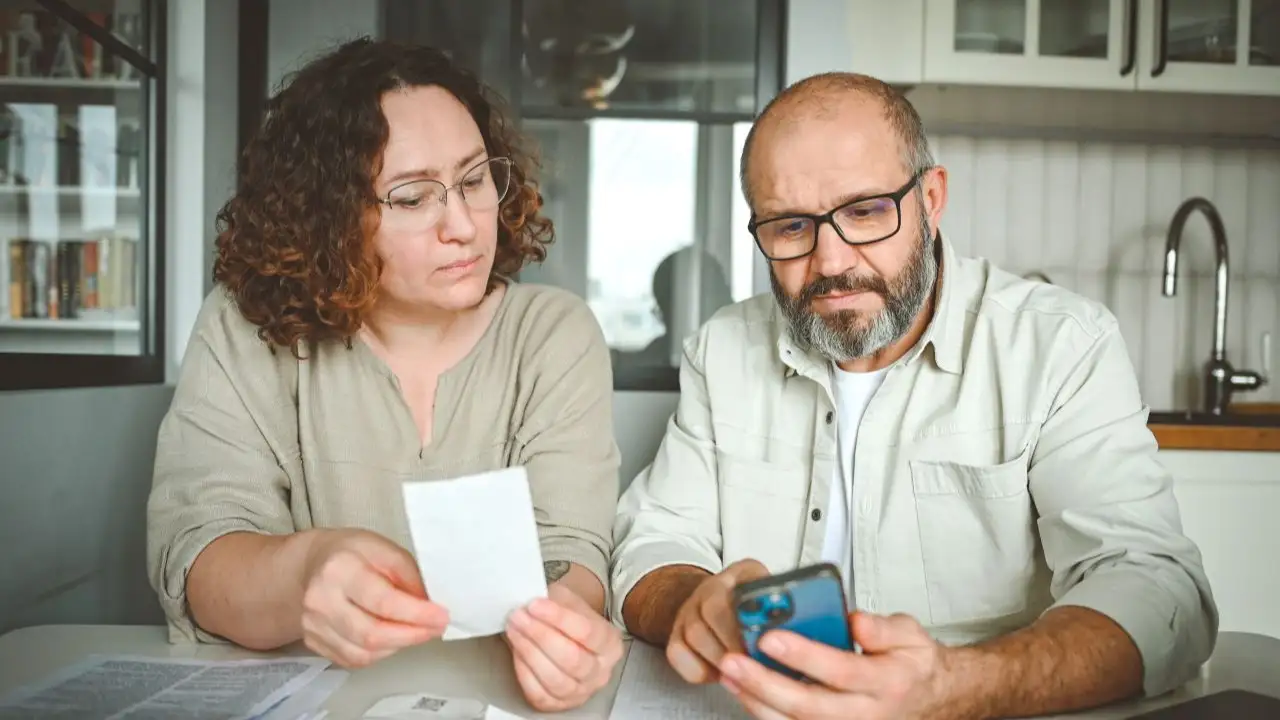
Resolve Debt
How to file Chapter 7 bankruptcy with no money
Feb 19, 2025
Written by
Reviewed by
Key takeaways:
Chapter 7 bankruptcy is designed to help you clear unsecured debts when you can't afford to pay.
Fee waivers and legal aid services could help you save money on a Chapter 7 bankruptcy case.
Debt resolution could help you get rid of some debt if you don't qualify for Chapter 7 bankruptcy.
If you’re exploring bankruptcy, that probably means your debt situation is serious. It can be really frustrating to find out that bankruptcy cases cost money. If you had money, you might not need bankruptcy protection, right?
Chapter 7 bankruptcy isn’t free, but there are strategies for reducing costs. When those options aren’t a good fit, you might be able to resolve your debt instead (get your creditors to agree to accept less than the full amount that you owe.
You can get through your debt situation. You just need to decide how to do it.
Filing bankruptcy with no money when you’re in serious debt
What is bankruptcy? In simple terms, bankruptcy is a legal process for dealing with debt. Chapter 7 bankruptcy can eliminate unsecured debts. In exchange, you agree to give up some of your assets. Assets are things that you own.
So how does that benefit you if you have lots of debt but little or no money?
When you file for bankruptcy protection, your creditors have to stop collection actions against you. So that's one good reason to consider bankruptcy if you're under threat of a debt lawsuit or mortgage foreclosure.
Aside from that, Chapter 7 could help you hit the reset button financially. You could walk away from your unsecured debts in a matter of months.
Not everyone qualifies for Chapter 7. You have to first take a means test. That’s a look at your income and your necessary expenses. If you can afford a monthly payment, you’ll be directed to Chapter 13 bankruptcy instead, which is a structured payoff plan.
Chapter 7 and your assets
In a Chapter 7 bankruptcy, the court could take some of your assets and sell them to repay your creditors. Keep in mind these two things:
It's not a free-for-all. Federal and state laws limit what the bankruptcy court can take. Things you’re allowed to keep are called bankruptcy exemptions.
You might not lose much if you don't own a lot of assets to begin with.
Chapter 7 bankruptcy is suited for people who have a lot of unsecured debt and don't own many things that the court would take and sell. Examples of unsecured debt include:
Credit cards
Medical bills
Most personal loans and personal lines of credit
Payday loans
Secured debts, on the other hand, are guaranteed by something of value. For example, a mortgage loan is secured by your home. If you can’t afford to repay a secured loan, the lender would typically take steps to sell the asset that’s tied to the loan.
6 steps to file Chapter 7 bankruptcy with no money
If you need to file Chapter 7 but have little or no cash to spare, there are several potential ways to save. You could apply for a fee waiver, request help from legal aid or pro bono attorneys, or represent yourself to cut costs.
1. Apply for a fee waiver
When you file a bankruptcy petition (your initial paperwork that says you’re asking the court for help), you have to pay fees to the court. If you have no money, you can apply for a fee waiver.
You'll need to fill out Form 103B and submit it to the bankruptcy court. This form asks for details about your family size, income, expenses, and assets to gauge your ability to pay.
If the court decides that you can't pay the amount due in full or in installments, the fee is waived.
What if my fee waiver application is denied?
If you're not eligible for a fee waiver, you'll need to pay the fee either in full or in installments. You'll need to fill out Form 103A to apply for an installment plan.
2. Check for free legal aid services
Legal aid services help people with low income and/or limited resources understand what's required to file bankruptcy. Some legal aid services offer full representation and will file your petition for you at no cost.
You could search for “legal aid services near me” to find out what's available in your area.
How do I know if I qualify for free legal aid?
Legal aid services typically base eligibility on your household income and family size. Some legal aid services offer an online tool to check eligibility.
3. Look for pro bono bankruptcy attorneys
Pro bono means an attorney will work for you without a fee. Some bankruptcy attorneys partner with legal aid services to offer free help or do so independently through their practices.
You can search for “pro bono bankruptcy attorney” near me to find out who offers free legal help in your area and how to qualify.
Can I represent myself if I can't find free help?
You could act as your attorney in bankruptcy court. The rules don’t prevent that. If you decide to self-represent, you might find it helpful to research how a bankruptcy proceeding works and what you can expect at each stage.
4. Consider a DIY bankruptcy filing if you’re comfortable
You could file bankruptcy yourself if your case is fairly straightforward and you've taken the time to study how Chapter 7 works. That could save you $2,000, which is the typical cost to hire an attorney for a Chapter 7 case.
Does an attorney make it easier to get a discharge, which means your debts are eliminated? Possibly.
Statistically, your odds of success are higher when you have an attorney on your side. That's important to weigh as you decide whether to choose a DIY option.
What happens if I make a mistake while filing on my own?
If you make a mistake with your filing, you could amend it with the court. If you don't catch the mistake, the court could dismiss your petition, which means you'll have to start over.
5. Complete the required credit counseling at low or no cost
Before you can file for bankruptcy, you have to go through credit counseling. After you file, you have to complete debtor education. Both must be done through an agency that's approved by the bankruptcy court.
Some of these agencies offer free or low-cost credit counseling and debtor education services to people who plan to file with no money. You can find a list of approved agencies in your area on the Department of Justice website.
Can I get a discount or waiver for credit counseling?
You could ask the bankruptcy court to waive the credit counseling requirement for one of three reasons:
Incapacity
Disability
Active military duty
If none of those fit your situation, you'll need to complete credit counseling. But you could look for a free or low-cost option near you.
6. Submit your bankruptcy paperwork to the court
Once you're ready to file, you'll submit your bankruptcy paperwork to the district court closest to you. You can find links to each of the federal bankruptcy courts through the U.S. Courts website.
You'll need to pay the filing fee if you don't qualify for a waiver and show proof of credit counseling.
You can either mail in your completed forms or submit them online.
Will filing for Chapter 7 stop creditor harassment?
Filing for Chapter 7 bankruptcy protection results in an automatic stay, which is a court measure that stops collection actions. While the stay is active, creditors can't call or send letters to request payment, sue you, garnish your wages, or freeze your bank accounts. That doesn’t mean the debts go away.
What's the difference between Chapter 7 and Chapter 13 bankruptcy?
Chapter 7 bankruptcy could help you eliminate debt and, in exchange, you turn over some of your assets to the court. Chapter 13 bankruptcy lets you restructure your debt and pay it off over three or five years.
The upside of Chapter 13 is that you don't have to give up any assets. But you do have to pay back what you owe. The payment amount is based on your income and necessary expenses. If you'd like to wipe the slate clean on unsecured debts and don't have a lot of money, Chapter 7 could make more sense.
How much debt do you need to file for bankruptcy?
There's no minimum dollar amount of debt you need to file for bankruptcy. You can file whether you have a little debt or a lot.
You might file for bankruptcy if you have debt you can't pay, regardless of the amount. If you could pay something, on the other hand, or you could work out a plan to resolve debt, then you might consider that option instead.
What are the alternatives to bankruptcy?
Bankruptcy is just one way to deal with debt. Here are some other possibilities to weigh if you have overwhelming debt.
Debt management. A debt management plan is a structured plan to pay off all of your unsecured debt in 3-5 years. You make one payment to a nonprofit credit counseling agency, who then distributes the money to your creditors.
Resolve debt. Debt resolution means clearing debts for less than what you owe. Your creditor agrees to accept a partial payment and forgive the rest of your balance. You can negotiate your own debts, or work with a professional debt resolution company that negotiates on your behalf.
You might talk to a debt expert about your options if you don't qualify for Chapter 7 because your income is too high. An expert could look at your budget and debt to help you find the best solution for your financial situation.
Whatever path you decide to take, remember to breathe. Your debt may feel like it's too much to handle, but you can move forward and make a positive change in your finances.
Author Information
Written by
Rebecca is a senior contributing writer and debt expert. She's a Certified Educator in Personal Finance and a banking expert for Forbes Advisor. In addition to writing for online publications, Rebecca owns a personal finance website dedicated to teaching women how to take control of their money.
Reviewed by
Jill is a personal finance editor at Achieve. For more than 10 years, she has been writing and editing helpful content on everything that touches a person’s finances, from Medicare to retirement plan rollovers to creating a spending budget.
Related Articles
While there is no one best way to pay off credit card debt, learn how you can prepare your finances, Depending on your financial situation choose between four ways to
Rebecca Lake
Author
Medical debt is common and you may wonder if it can be forgiven. However, medical debt doesn't affect your credit the same way as other debt. You might be able to get your medical debt forgiven or resolved.
Jackie Lam
Author
Credit card debt forgiveness is possible through credit card hardship programs, debt resolution programs, and bankruptcy. Learn how you can pay less.
Kimberly Rotter
Author
While there is no one best way to pay off credit card debt, learn how you can prepare your finances, Depending on your financial situation choose between four ways to
Rebecca Lake
Author
Medical debt is common and you may wonder if it can be forgiven. However, medical debt doesn't affect your credit the same way as other debt. You might be able to get your medical debt forgiven or resolved.
Jackie Lam
Author
Credit card debt forgiveness is possible through credit card hardship programs, debt resolution programs, and bankruptcy. Learn how you can pay less.
Kimberly Rotter
Author


